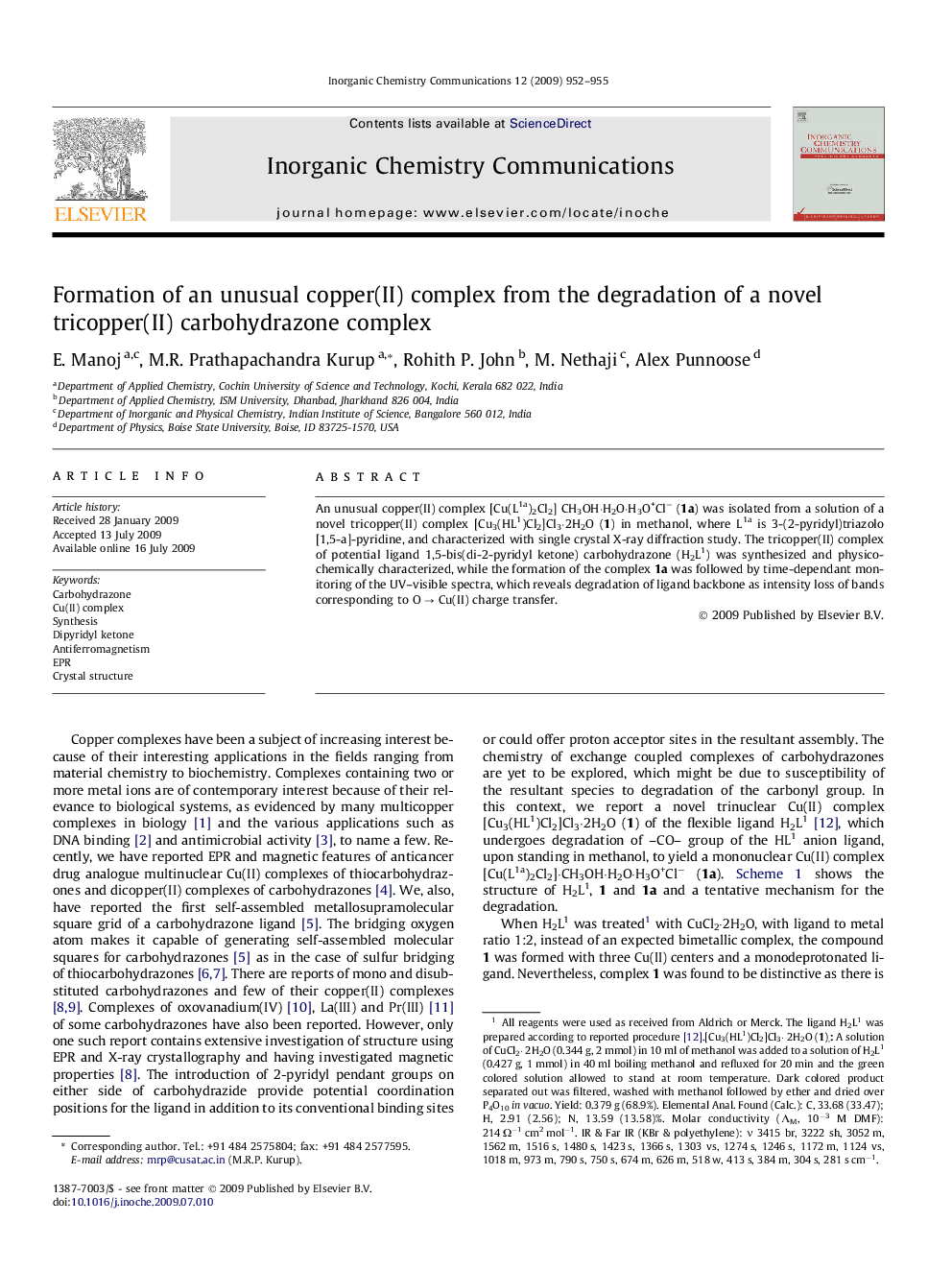| Article ID | Journal | Published Year | Pages | File Type |
|---|---|---|---|---|
| 1303060 | Inorganic Chemistry Communications | 2009 | 4 Pages |
An unusual copper(II) complex [Cu(L1a)2Cl2] CH3OH·H2O·H3O+Cl− (1a) was isolated from a solution of a novel tricopper(II) complex [Cu3(HL1)Cl2]Cl3·2H2O (1) in methanol, where L1a is 3-(2-pyridyl)triazolo[1,5-a]-pyridine, and characterized with single crystal X-ray diffraction study. The tricopper(II) complex of potential ligand 1,5-bis(di-2-pyridyl ketone) carbohydrazone (H2L1) was synthesized and physico-chemically characterized, while the formation of the complex 1a was followed by time-dependant monitoring of the UV–visible spectra, which reveals degradation of ligand backbone as intensity loss of bands corresponding to O → Cu(II) charge transfer.
Graphical abstractAn unusual copper(II) complex [Cu(L1a)2Cl2]·CH3OH·H2O·H3O+Cl− (1a) was isolated from a solution of a novel tricopper(II) complex [Cu3(HL1)Cl2]Cl3·2H2O (1) in methanol, where L1a is 3-(2-pyridyl)triazolo[1,5-a]-pyridine. The tricopper(II) complex of potential biscarbohydrazone ligand 1,5-bis(di-2-pyridyl ketone) carbohydrazone (H2L1) was synthesized and physico-chemically characterized. The variable temperature magnetic susceptibility measurement and EPR spectral studies reveal exchange coupled Cu(II) centers in complex 1. The complex 1a was characterized by single crystal X-ray diffraction study and found to be having an octahedral Cu(II) center. The time-dependant monitoring of the UV–visible spectra of a solution of 1 in methanol reveals loss of intensity of bands corresponding to O → Cu(II) charge transfer, which is inferred as a consequence of aerobic degradation of –CO– group and cyclization of ligand unit to yield the complex 1a.Figure optionsDownload full-size imageDownload as PowerPoint slide
